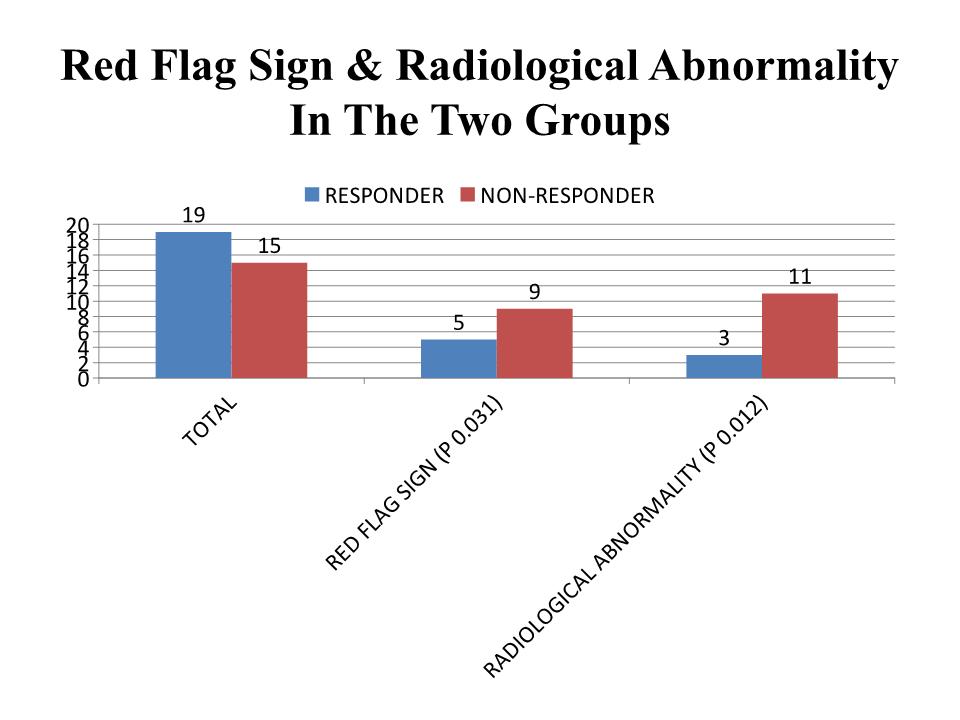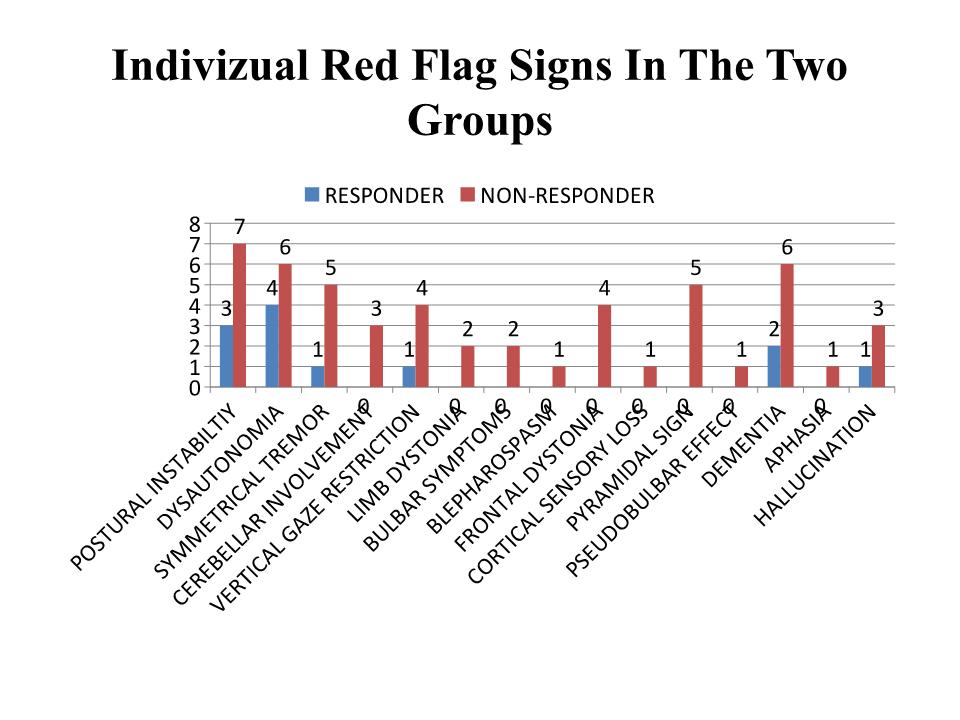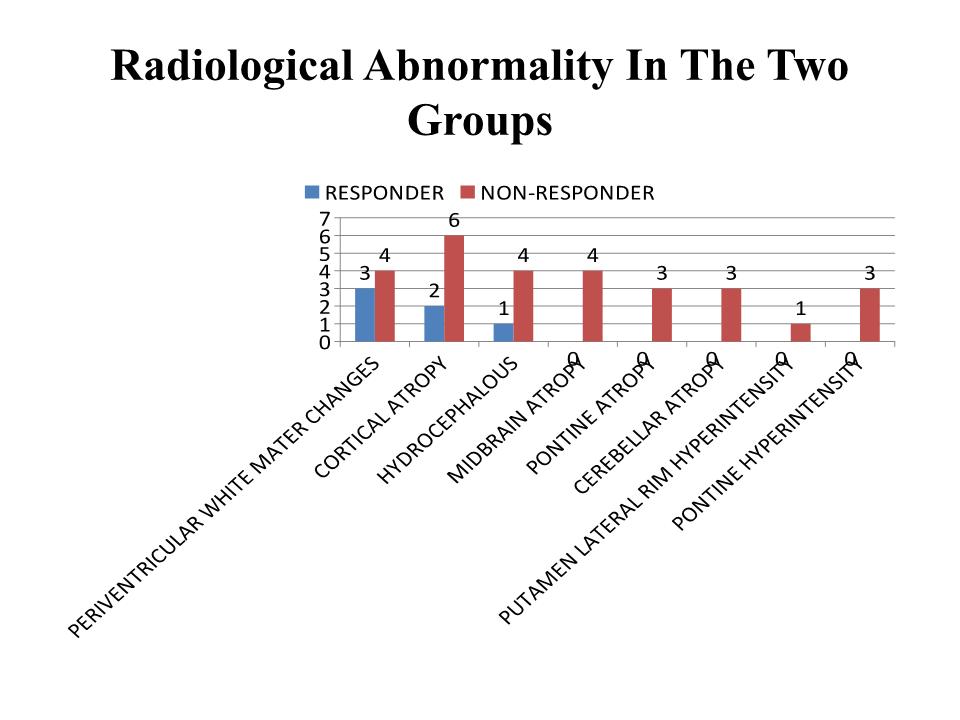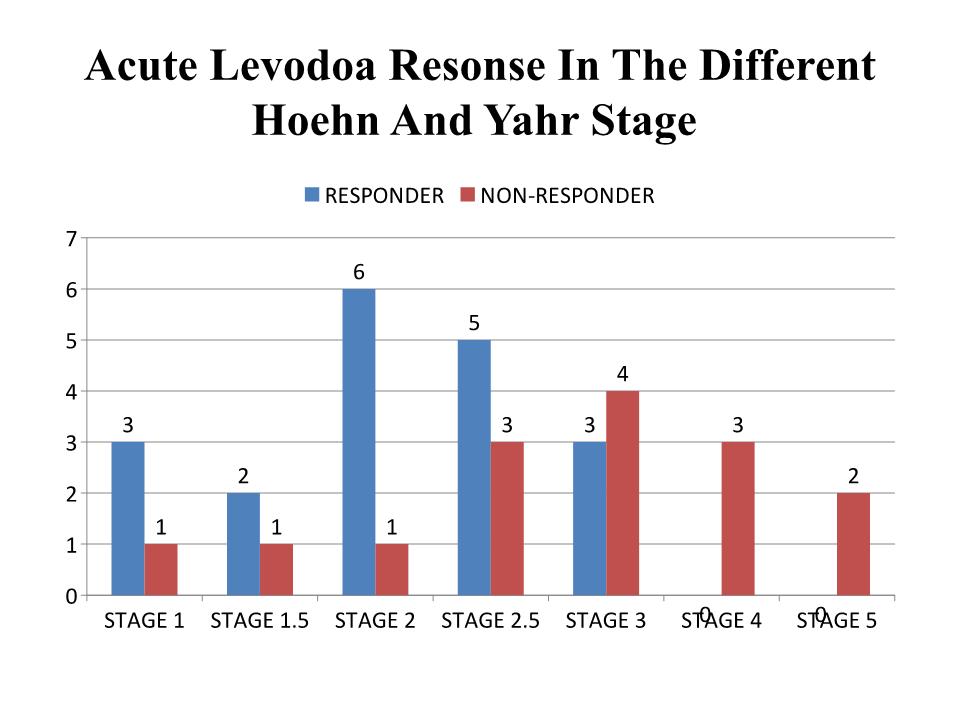Session Information
Date: Monday, June 5, 2017
Session Title: Parkinsonism, MSA, PSP (Secondary and Parkinsonism-Plus)
Session Time: 1:45pm-3:15pm
Location: Exhibit Hall C
Objective: In this study we have tried to find any association between acute levodopa challenge responsiveness,red flag signs of parkinsonism and neuroimaging abnormality
Background: Distinguishing IPD from atypical parkinsonism is challenging because of lack of characteristic signs & symptoms during the early stage.Short-term challenges with dopaminergic agents are used in patients with IPD to predict therapeutic effect of sustained l-dopa treatment
Methods: In this single centre prospective study we evaluated 36 patients with early parkinsonism(≤2yrs) clinically,radiologically along with acute levodopa challenge and followed over a period of 6months to asses for evolution of bad parkinsonism(evident by presence of red flag signs and neuroimaging abnormality)
Results: Out of 36 patients 2developed akinetic rigid mutism during antiparkinson drug withdrawl and were excluded,4developed intolerance symptoms during acute challenge.Red flag sign was present in 5(26.3%)patients in responder(19patients)group compared to 9(66.6%)patients in nonresponders(15atients)(P=0.031).Neuroradiological abnormality was present in 3(15.8%)in responder group compared to 11(73.3%)in nonresponder(P=0.012).Except for dysautonomia(P=0.09),other red flag signs like symmetrical `tremor(P=0.003), cerebellar involvement(P=0.001),vertical opthalmoparesis(P=0.001),abnormal limb posturing,bulbar symptoms,blepharospasm & frontal dystonia,cortical sensory loss,pyramidal sign &pseudobulbar affect,dementia&aphasia(P=0.021)were significantly more present in non-responder group.Patients who developed l-dopa intolerance symptoms during challenge developed dysautonomia out of which 1 had also cerebellar involvement.Among radiological abnormality except for periventricular leukoaraiosis(P=0.6),cortical atropy(P=0.01)&hydrocephalous were significantly more present in non-responder group
Conclusions: Though a small cohort with a short-term follow-up period,a good agreement was found between response to acute l-dopa challenge and absence of red flag signs(except dysautonomia) and neuroimaging abnormality(except leukoaraiosis)which could help us to predict the possibility of bad parkinsonian,but they should be further followed up.Development of intolerance during acute challenge might points towards the possibility of developing dysautonomia.Visible motor improvement after single dose of l-dopa provides good compliance to long term drug therapy
References: 1.National Collaborating Centre for Chronic Conditions(UK). Parkinson’s disease: national clinical guideline for diagnosis and management in primary and secondary care.London: Royal College of Physicians, 2006
2.MERELLO M, NOUZEILLES MI, ARCE GP, LEIGUARDA R. Accuracy of acute levodopa challenge for clinical prediction of sustained long-term levodopa response as a major criterion for idiopathic Parkinson’s disease diagnosis.Mov Disord 2002
To cite this abstract in AMA style:
M. ACHARYA, A. BISWAS, A. Chatterjee, S. DAS. Acute L-dopa Challenge Test In Early Parkinsonism With Respect To Presence Of Red Flag Signs &MRIAbnormalitis [abstract]. Mov Disord. 2017; 32 (suppl 2). https://www.mdsabstracts.org/abstract/acute-l-dopa-challenge-test-in-early-parkinsonism-with-respect-to-presence-of-red-flag-signs-mriabnormalitis/. Accessed October 16, 2025.« Back to 2017 International Congress
MDS Abstracts - https://www.mdsabstracts.org/abstract/acute-l-dopa-challenge-test-in-early-parkinsonism-with-respect-to-presence-of-red-flag-signs-mriabnormalitis/




